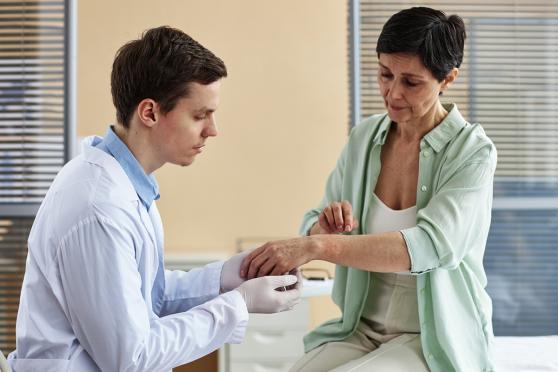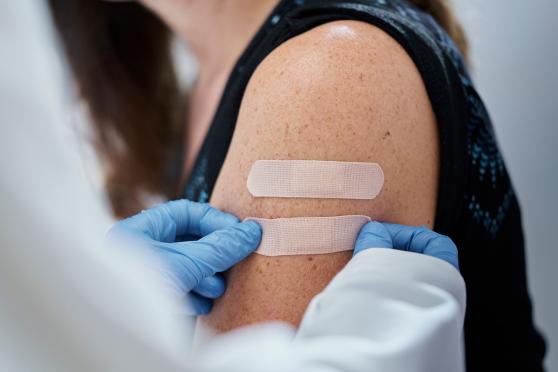Metabolic monitoring for children and adolescents taking medications
Certain kinds of mental health medications can have life-changing benefits for children and adolescents who need them. But some may have risks. Metabolic monitoring can help you figure out what medicine is right for your child.

1. Schedule regular appointments with your doctor.
When a child or adolescent starts taking antipsychotic medication, it will require more frequent doctor appointments. These medications can be very helpful for children diagnosed with certain mental health conditions — but they also have the potential for health risks.
According to the National Committee for Quality Assurance, there are some mental health medications that can increase a child’s risk of some serious health complications if not properly monitored. These risks include metabolic health challenges that can lead to more serious health conditions in adulthood. That’s why it’s important to monitor children and adolescents who are taking these medications.
Common mental health medications are often prescribed to children to treat the following conditions:
- Attention deficit hyperactivity disorder
- Bipolar disorder
- Disruptive mood dysregulation disorder
- Oppositional defiant disorder
- Schizophrenia
Keeping up with appointments gives your doctor a chance to monitor possible side effects. Side effects may include:
- Increased blood sugar
- Increased risk of developing diabetes
- Increased risk of developing heart disease
- Weight gain
Regular appointments and exams give your doctor the chance to see whether the medication is working as well as monitoring aspects such as height and weight. The doctor will also check the patient’s blood sugar and cholesterol. These checks can help prevent a child or adolescent from developing the side effects mentioned above.
Based on the results of the physical examination and patient’s measurements, the doctor may want to do further lab work. Those tests may include:
- Fasting glucose level tests
- Hemoglobin A1C test or lipid panel
- Liver function tests
- Prolactin levels tests
- Thyroid screenings
2. Take correct medications and dosages.
Because children may have multiple struggles, they may be prescribed multiple medications. It’s important to take all the medications as directed and be aware of the dosage and frequency. If you notice side effects or any other concerning changes in your child, contact your child’s doctor. Keep in mind that most medications take two weeks or more to take effect.
3. Move your body as often as possible.
According to the U.S. Department of Health and Human Services, kids ages 6 to 17 should get at least 60 minutes of moderate to vigorous activity daily. The positive results of regular activity include improving academic performance and brain health; maintaining healthy weight, blood pressure, and blood sugar levels; and reducing the risk of chronic diseases.
Daily activity should include aerobic exercise. That can include the following:
- Climbing
- Hopping
- Running
- Skipping
- Sports like basketball and gymnastics
- Walking
Any safe physical activity that increases your child’s heart rate helps. Research also shows that daily physical activity can have immediate health benefits including:
- Helping your cells use blood sugar more efficiently
- Improving sleep quality
- Boosting ability to learn, focus, and solve problems
- Lowering blood pressure
Physical activity complements medications and should help achieve the results you’re hoping for with metabolic monitoring. Keep in mind that it’s important to hydrate as needed, especially in warmer weather. Be sure to discuss any exercise plan with your doctor.
4. Talk to your doctor about supplemental treatment, such as therapy.
While medications and increased physical activity can be very helpful for children with mental health issues, they aren’t the only answer. Consider supplemental treatment, such as cognitive behavioral therapy (CBT) or psychosocial interventions.
According to the National Alliance on Mental Illness, CBT focuses on the interaction of thoughts, feelings, and behaviors and how they relate to different mental illnesses, such as anxiety and mood disorders. Psychosocial therapy uses two strategies: learning coping skills so that patients are more successful at handling a stressful environment and developing the resources that reduce future stressors.
Your doctor or an experienced psychologist can help you decide the best type of therapy to start with for your child. For example, occupational therapy can help your child learn to control their body and their emotions. This can be very helpful when your child has complex behavioral challenges. Speech therapy can help your child with language skills and self-expression, which can reduce frustration in communicating with others.
It’s always important and in your child’s best interest to ask your doctor for recommendations. These conversations will give you the tools you need to monitor your child’s progress and responses to medications. Communicating with your child’s doctor will also give you a chance to learn the best ways to supplement your child’s medication plan for more well-rounded mental health treatment overall.


